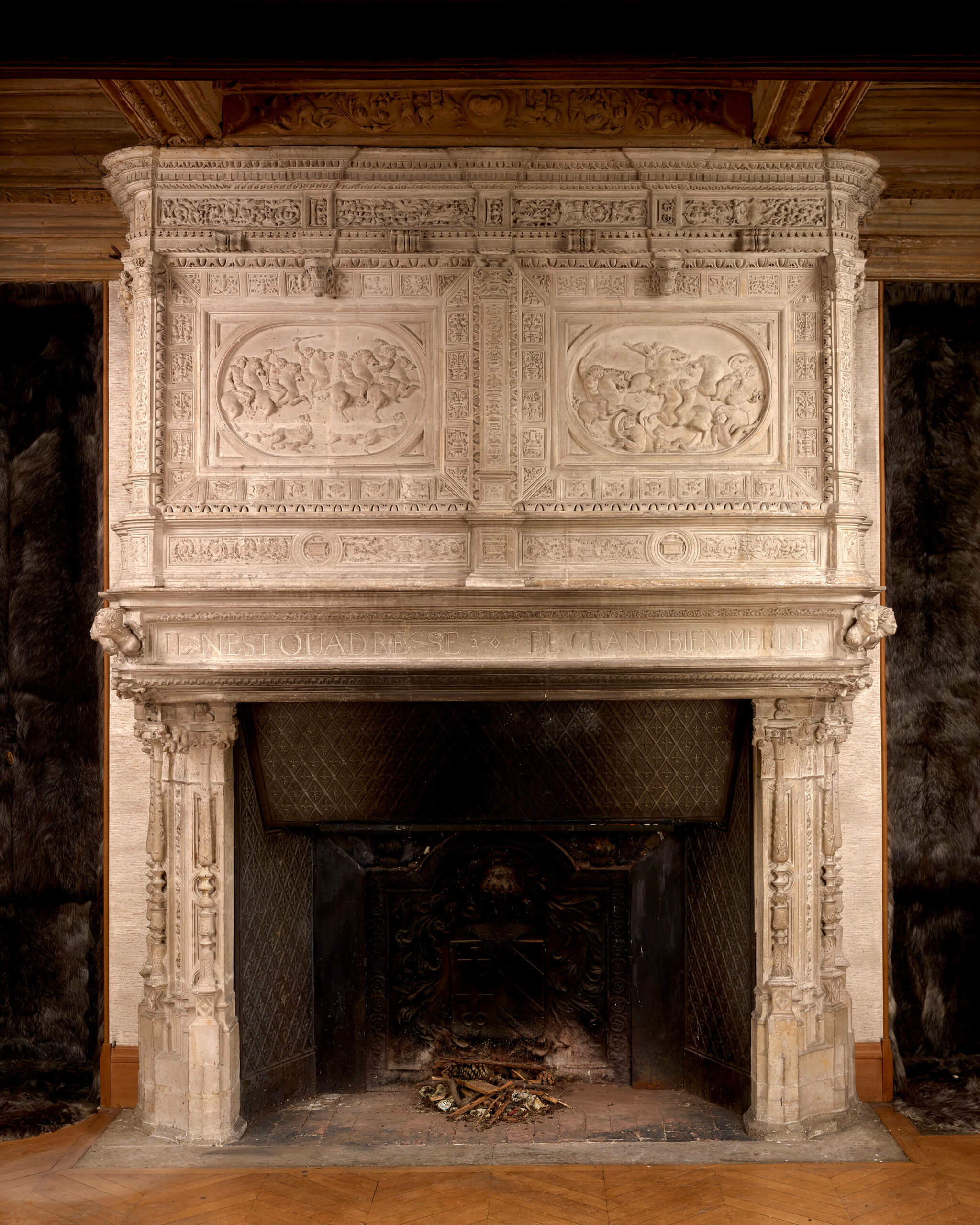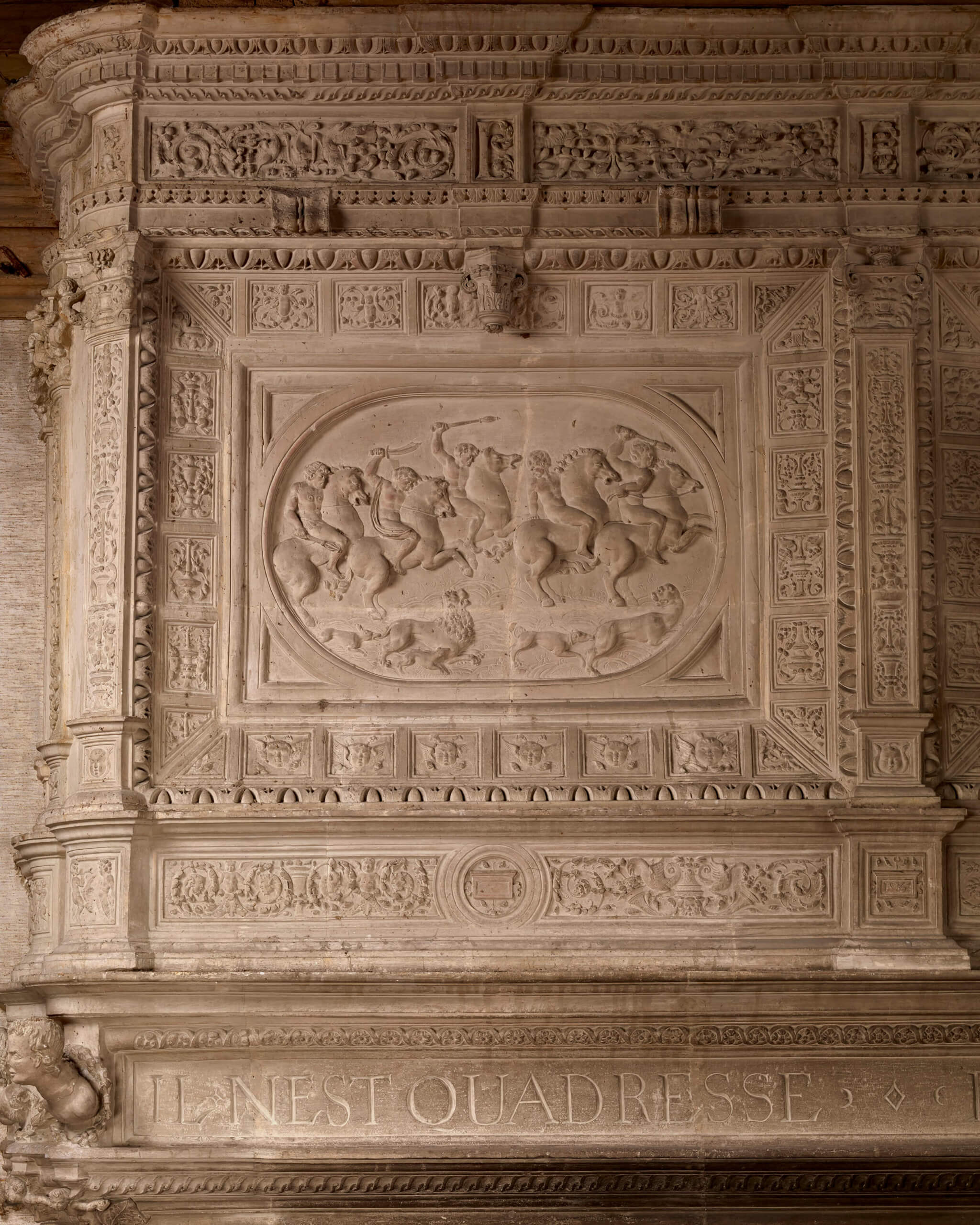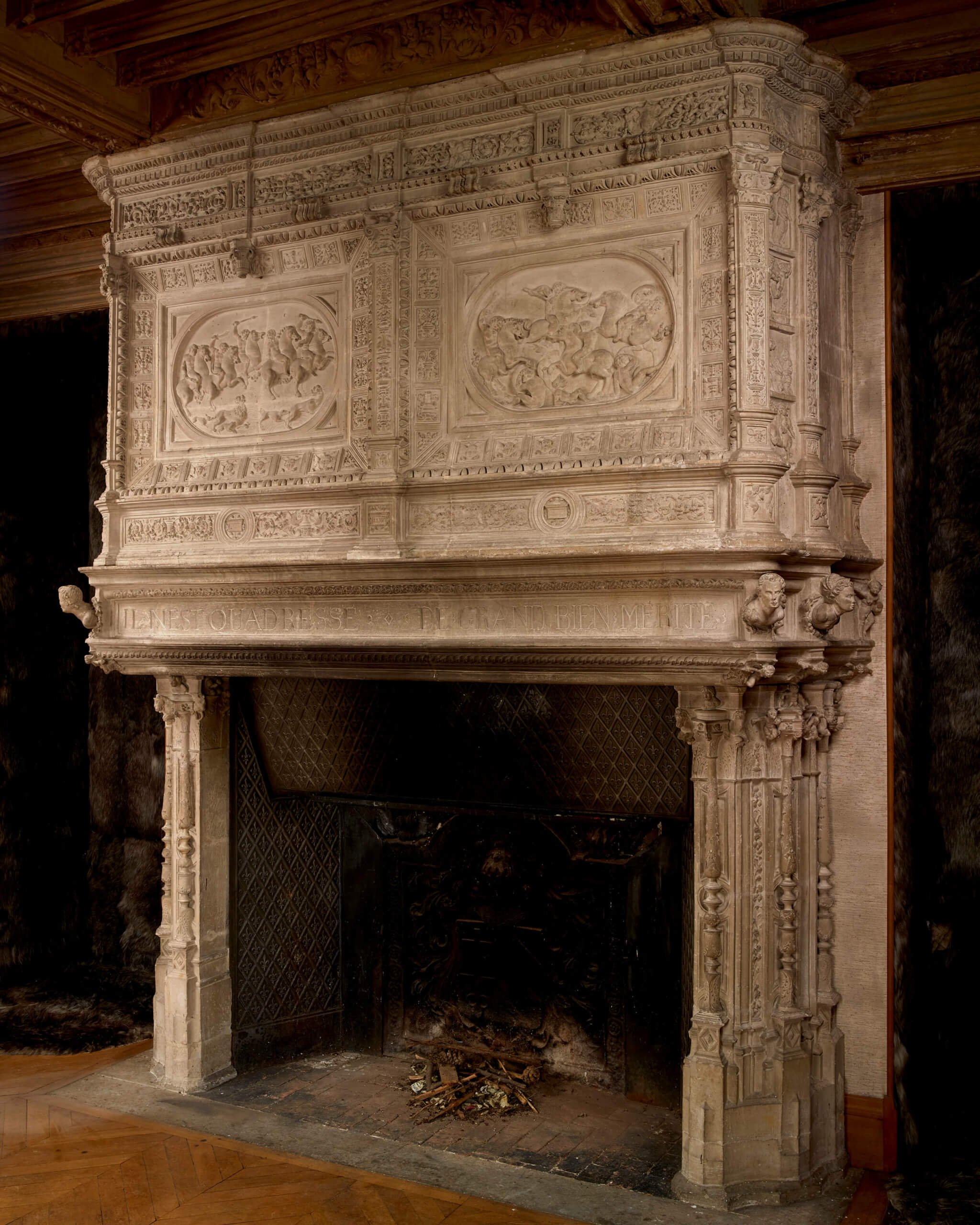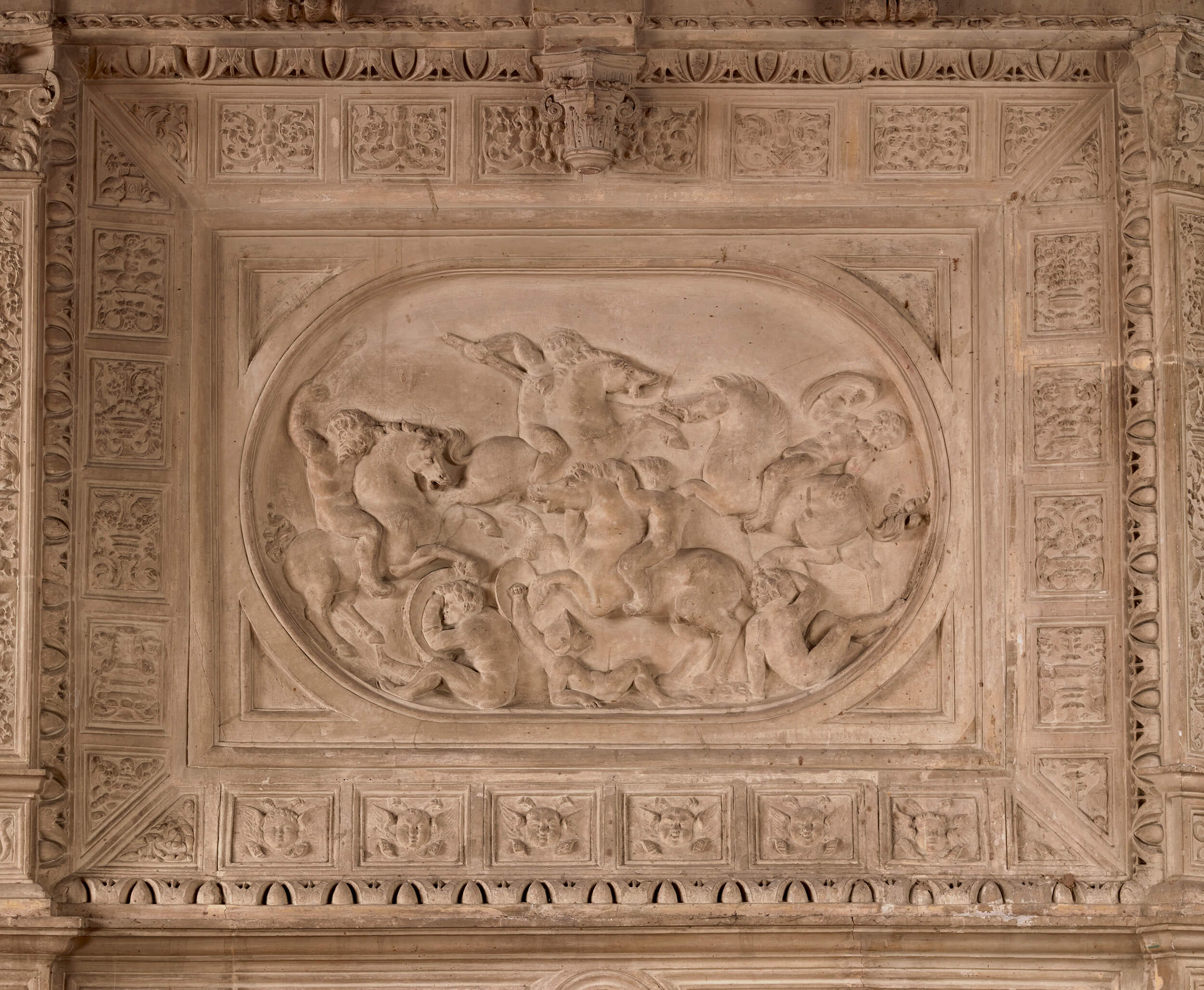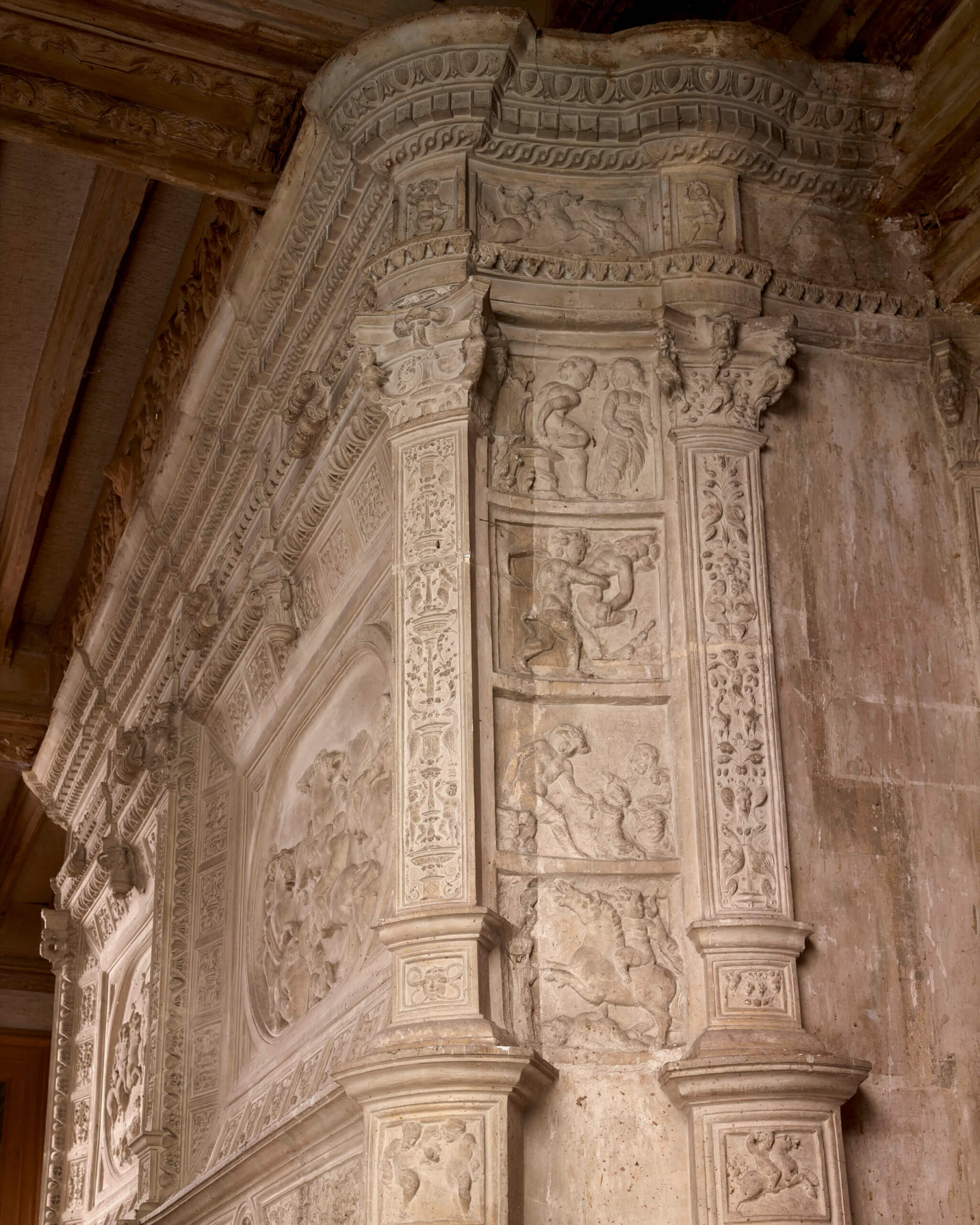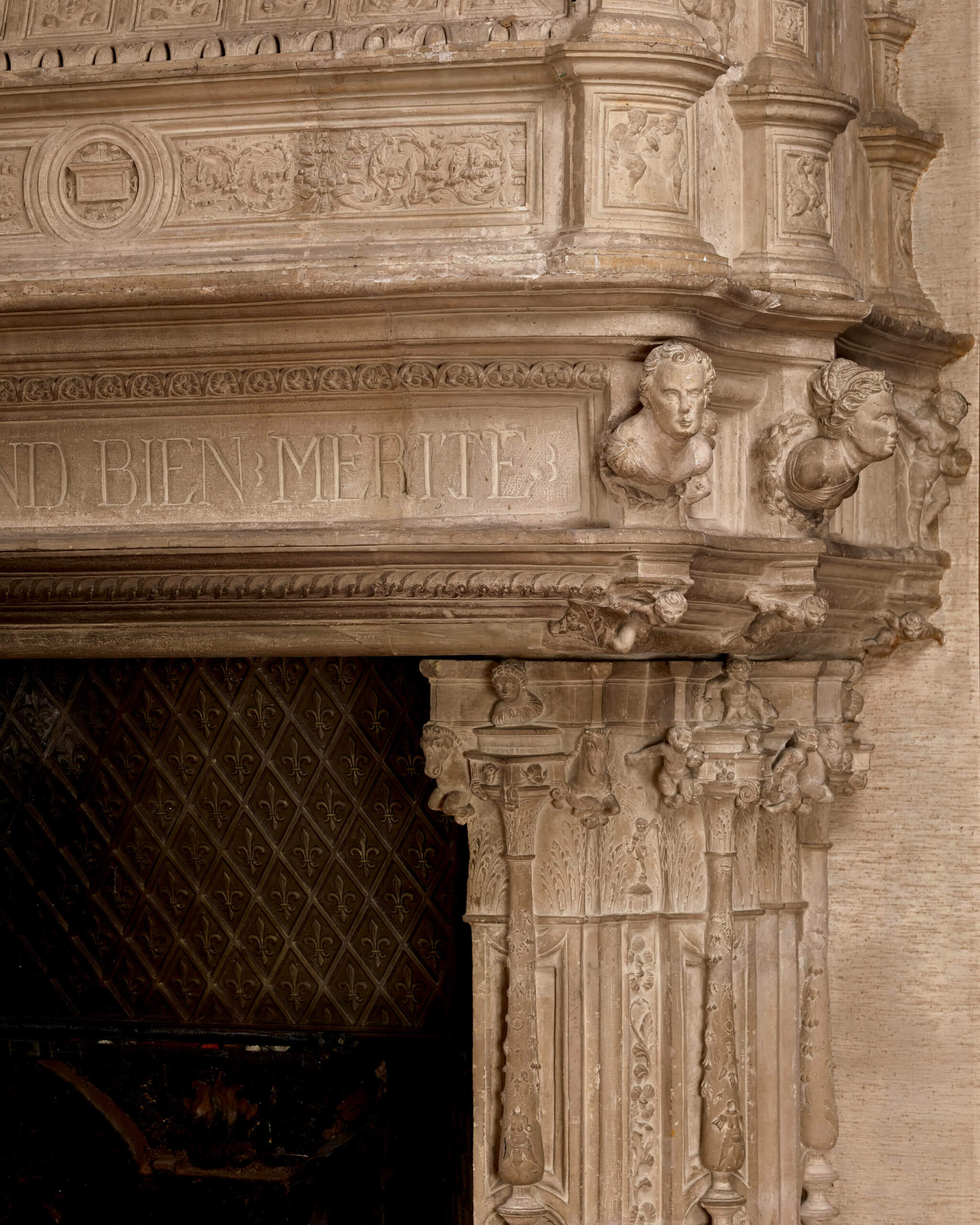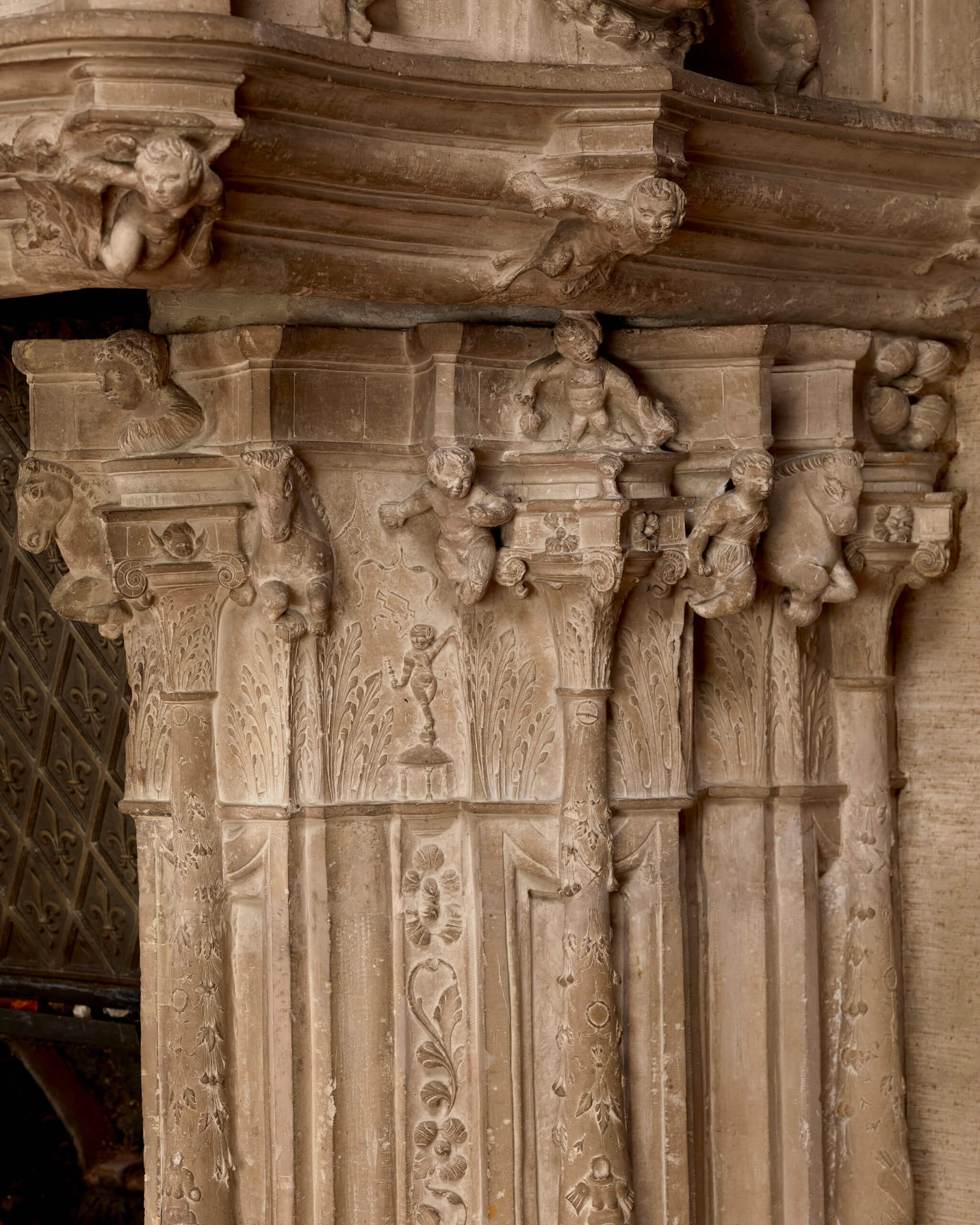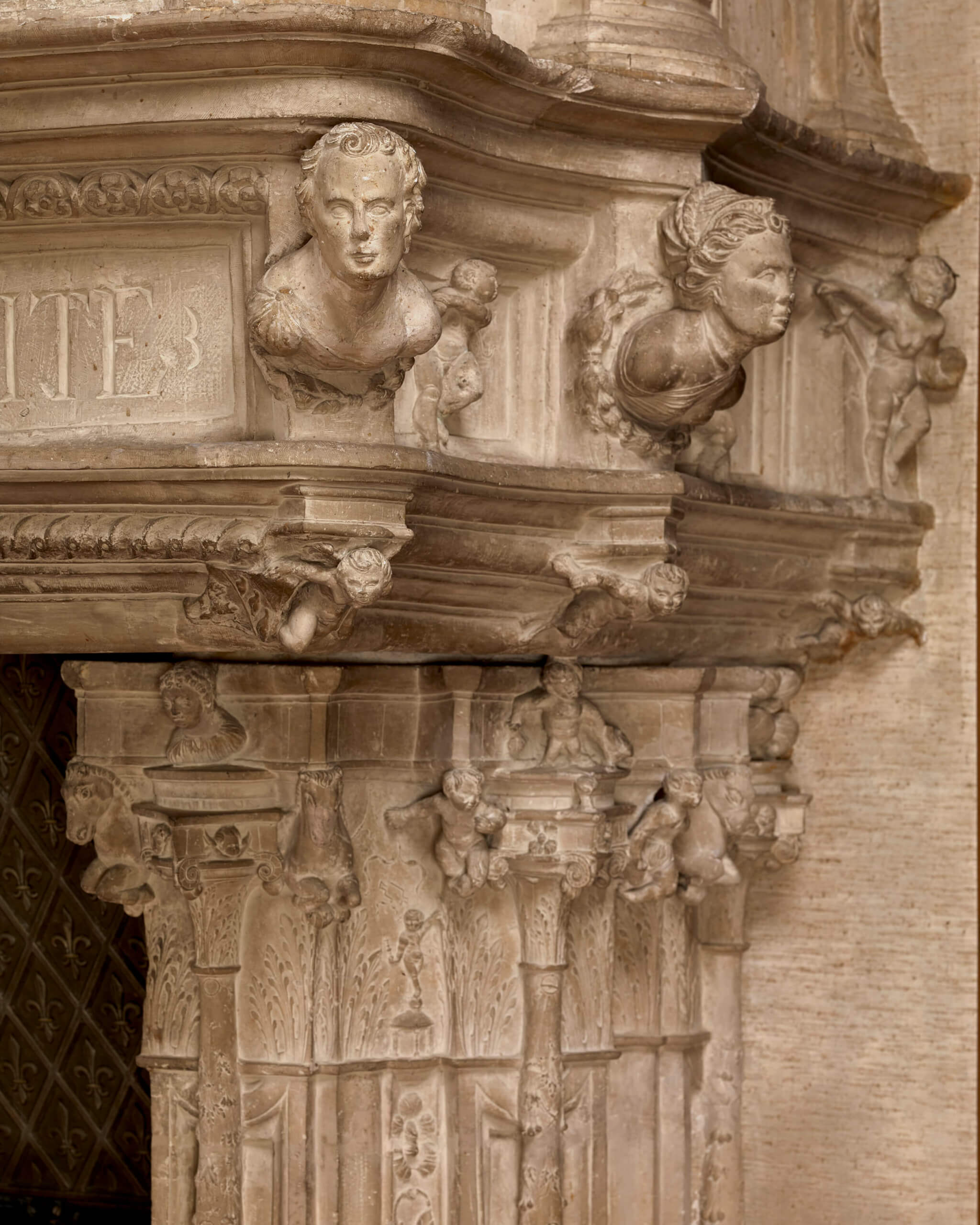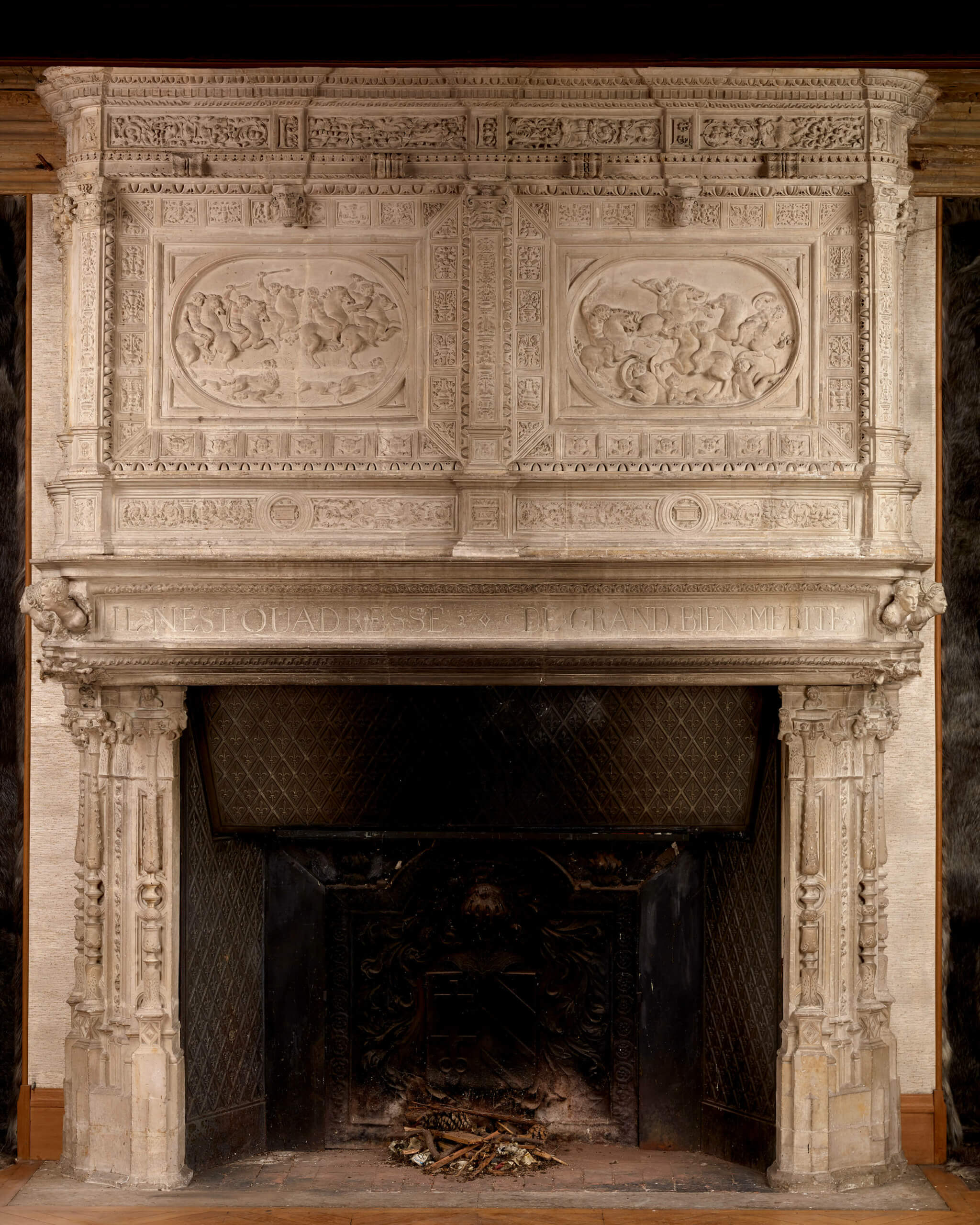

Sculpted stone from Tonnerre (Yonne, France).
Total H.: 4.20 m. (13 ¾ ft.); W. at cornice level: 3.75 m. (12 ¼ ft.); D. 92 cm. (36 ¼ in.).
H. to lintel: 2.45 m. (8 ft.); W. of lintel: 3.55 m. (11 ¾ ft.)
Dimensions of the hearth: H. 1.90 m. (6 ¼ ft.); W. 2.15 m. (7 ft.).
MARKS AND INSCRIPTIONS: 1534, engraved in a recessed compartment and in the centre of the base of the hood of the fireplace; coats of arms of the Merlan family: “gules a lion or holding in its dexter paw a crescent argent surmounted by an estoile likewise, with a chief azure charged with three martlets sable”, visible on both sides of the frieze highlighting the cornice of the mantle; IL N’EST QU’ADRESSE – DE GRAND BIEN MERITE (“There is no skill but in the greatest merit”), the Merlans’ motto engraved on the lintel.
PROVENANCE: executed in 1534 on behalf of Philippe Merlan (1503-1546), Baron of Montpont, lord of Jully-lez-Arnay-le-Duc, contrôleur and général des finances in Burgundy and Bresse under Francis I, in his castle in Arnay-le-Duc, in the Côte-d’Or, in the Burgundy-Franche-Comté region; property of his son, Gabriel Merlan (1528-1562), Baron of Montpont and lord of Jully-lez-Arnay-le-Duc like his father, trésorier de France and général des finances in Burgundy and Bresse; collection, after 1562, of the family of Chabot-Charny; sold in 1634 by Françoise Bernarde de Montessus, Countess of Charroux and widow of Charles of Chabot, Marquis of Mirebeau, to Henri II of Bourbon-Condé (1588-1646), first Prince of the Blood, Peer of France and grand veneur (Master of the royal hounds) of France; collection until 1675 of his son, Louis II of Bourbon-Condé (1621-1686), known as the Great Condé, the famous victor of the battle of Rocroi (1643); returned in 1675 to the Chabot family who kept it until 1778; During that period, the Arnay lands passed from the Chabots to the Rohans and then from the latter to the Brions through marriages; sold in 1778 by Marie-Louise-Julie- Constance de Rohan, countess of Brionne, to the Royal House of the Ladies of Saint-Cyr, which retained the castle until the Revolution; as the seat of the municipality, it was auctioned off in 1792 as national property; It then passed from hand to hand until it was bought in the mid-1860s by Jean-François-Henri Bouruet (1801-1870), one of the wealthy owners of the famous department store “Au Gagne-Petit” in Paris, who undertook to deprive it of a large part of its woodwork, sculptures and eight mantelpieces, including the one presented here; after that date, the mantelpiece was moved to one of the rooms of the neo-Renaissance château of Villemenon in Servon, Seine-et-Marne, which Jean-François-Henri Bouruet ordered to be built during the same years; it has remained there to this day; sold after the death of Mr Bouruet in 1870 by his heirs, the Château of Villemenon was successively to become the property of Mr Jeanson, from 1870 to 1875, of Mr Boutet, from 1875 to 1911, of Mr Drouin, of Mr Méhu, a banker in Paris, and finally of Hélène Martini (1924-2017), a famous director of theatres, cabarets and concert halls, nicknamed the “Queen of Parisian nights”.
